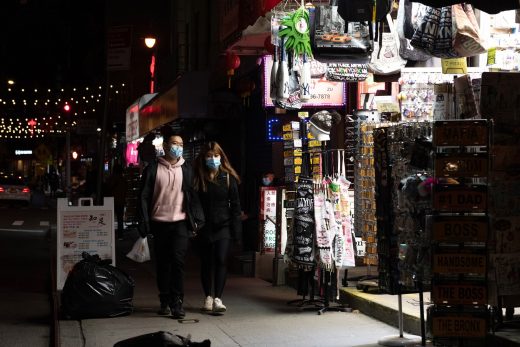How Should Leaders Support #StopAsianHate
A few years ago, while working on a diversity and inclusion project, the client suggested we exclude Asian men from the grouping of “underrepresented minorities”. Their perception was that they didn’t have a challenge attracting or retaining Asian men, so therefore, they shouldn’t be considered underrepresented. I remember being both surprised and unsettled. My brother is Korean and I’ve seen the subtle and overt discrimination he has faced in life and work. Were Asian men truly having the same experience as white men at this firm? If they were, that would be counter to the data that shows that white collar Asian-American Pacific Islanders (AAPIs) are least likely to be promoted into management. We convinced them to run the analysis both ways.

Whether it’s subtle exclusions from diversity, equity and inclusion efforts or the 1,900% rise in anti-Asian incidents since the beginning of the pandemic, attitudes towards AAPIs are grounded in a complex set of fundamentally racist stereotypes and myths, particularly the model minority myth. Research also shows that 35% of anti-Asian incidents took place in businesses, more than streets, parks or online. As leaders, we need to ensure we are creating anti-racist workplaces that acknowledge the unique challenges different marginalized groups face. So what can we do to support our AAPI colleagues right now?

1. Acknowledge and denounce the hate
First, acknowledge that anti-Asian racist incidents have skyrocketed and that is creating significant fear and anxiety in your AAPI employees, friends and neighbors. By stating your support for efforts like #StopAsianHate or making a clear statement to employees, you are reinforcing a social norm that hate of any kind is not tolerated. Visibly changing social norms have been shown to be one of the most powerful influences on reducing prejudice and discrimination.
2. Offer direct support and understanding
Second, offer direct support to your AAPI employees and community members. Rather than asking open ended questions like “how are you feeling?”, acknowledge the news is distressing and offer to extend a deadline, take a project off their plate, or create space for healing conversations. Invite a neighbor or friend to take a walk or have coffee on the porch. Asian businesses have suffered particularly in the pandemic. The number of active AAPI business owners fell by 20% from February through December 2020, much higher than any other group. If your community has a Chinatown neighborhood, go visit the restaurants, supermarkets and shops as these neighborhoods have been hit very hard and residents are more likely to be living in poverty.
3. Stand up and take action
Third, be prepared to take action if you witness an incident and train people you care about to take action as well. Asian-Americans Advancing Justice and Hollaback! have teamed up to offer free online bystander training throughout the rest of April and May. Confronting prejudice when you see it can be uncomfortable, but it has been shown to improve your own wellbeing versus seeing it and not responding. As much as we’d like to shelter our Vietnamese daughter from this awful reality, preparing her for what to do if she sees it or experiences it is imperative.
4. Learn the history of the Asian American experience
Finally, increase your own awareness and understanding of the Asian experience in America. I recently learned about the Chinese Exclusion Act and the purges of Chinatowns up and down the West Coast in the late 1800s, something notably absent from my Washington State History classes in high school. PBS offers a five part series on the Asian experience in America. If you lead an organization, ensure your DE&I efforts address some of the specific challenges that your AAPI employees face and acknowledge that there is significant diversity within your AAPI community as well.
The most powerful ways to reduce prejudice and discrimination are to increase awareness, education, contact and connection between groups. The workplace might possibly be one of the best places in society to make meaningful changes to racist attitudes and norms, if leaders are willing to make a meaningful commitment to support the hard work that is needed.
Quote of the Week: “The reality is, being anti-racist isn’t a 2020 thing. It’s not even a 2021 thing. It’s a forever thing.”
— Erik Toda
Business & Finance Articles on Business 2 Community
(37)


